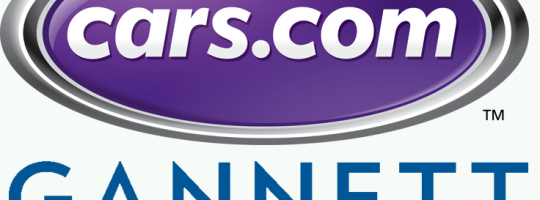Part 2: The Evolution Of A Category – The Changing Landscape Of Third Party Sites

Part 1: Buying Opportunity – The Changing Landscape Of Third Party Sites
A Changing Landscape
Today, the primary shopping functions performed by consumers on independent sites are:
- Brand feature research & comparison
- Brand/model expert and consumer reviews
- Inventory discovery (especially used)
- Trade-in terms discovery
- Price discovery and commitment
- Dealer consumer reviews/reputation
- Dealer selection and engagement
- Credit and finance terms discovery
The first four of these functions have been well served on the Internet for nearly 20 years, the last four have emerged in the past five years or so, sometimes served by specialist sites.
Different independent sites are optimized for different tasks in the consumer’s purchase journey. The major marketplaces and research portals often support several of these consumer tasks, but are typically known for their strength in one or two. For example, Edmunds and KBB are known by consumers as premier destinations for brand research and comparison, Autotrader and Cars.com for used inventory discovery and TrueCar for price discovery and commitment. Consumers connecting with dealers directly from these sites will have been performing different tasks and be at different stages of their purchase journey when engaged by the salesman.
Independent sites have not only been innovating in functionality, they have introduced new business models in acquiring sales opportunity. The dominant models to date have been the subscription marketing and listing service pricing models of the marketplaces (e.g., Autotrader and Cars.com) and the $-per-form-lead model of the lead aggregators such as Autobytel and Dealix. Now dealers can pay for leads on a $-per-sale basis (e.g., TrueCar), $-per-VDP view (e.g., LotLinx), flat fee (Costco) and new consumer traffic-based pricing models are in the works by several vendors.
Later in this series we will look at these different categories of site in more detail and how to leverage their audiences in your sales strategy. Let’s start with the lead aggregators.
Lead Aggregators
Autobytel was one of the first automotive companies on the Internet, launching its automotive lead service in 1995. It was joined by Dealix in 1998. The two firms have been the largest third party lead providers for the past 17 years, up until Autobytel’s purchase of Dealix earlier this year. Although both firms hosted their own Web portals to generate consumer leads, for much of their history the bulk of their lead volume came from matching customer “request for quote†forms on hundreds of Web portals with dealers willing to purchase those leads. Leads not matched to dealers could then be wholesaled to OEMs to be distributed to their dealer networks.

The role played by the lead aggregators in the consumer journey was to provide an outlet for shoppers on content portals, either their own or independent, to do price and inventory discover directly with one or more dealers. The lead is simply an express of consumer interest in price or availability information with the minimum information required for the dealer to contact the consumer and develop them into a sales opportunity.
Due to the nature of third party information, consumers have larger consideration sets at independent sites, which results in an increased ability for dealers to generate conquest sales. A very loyal consumer will most likely go directly to an OEM site or local dealer site for their next purchase.
Since even the best branded, highest quality, content portals (e.g., Edmunds, KBB, Yahoo Autos, Microsoft Autos, etc.) hesitated at making the sales investment required to sell to thousands of dealers, this lead aggregation model was an easy path for the portals to generate revenue by charging a premium price and having minimum sales costs.
With almost no investment required to set up an Internet presence, hundreds of automotive sites popped up in the 2000s seeking revenue from lead traffic. Some of these were niche enthusiast sites with a quality audience, many more were opportunistic “lead scrapers†– generating leads to sell to the aggregators using questionable tactics like unauthorized content and inventory republishing without adding original content, sketchy prize offers and aggressive price claims presented through paid and organic search.
Thus buying third party form leads is buying into a blend of sources of varying quality, and constant vigilance is required by both the aggregator and dealer to insure the blend is of adequate quality and consumer expectations are met. There is built-in tension in the model. The aggregator needs to blend in some lower cost, often lower quality, leads and sell them to multiple dealers to get the volume and margins they seek. The dealer is paying a fixed rate regardless of quality so they would prefer only the “Glengarry-Glenross lead.†Advanced dealers learned to carefully monitor the close rate of their leads and to negotiate source mix or quality commitments.
Jeff Coats, President of Autobytel, reports that there has been a sea change in the industry over the past seven years. In 2008, 97 percent of Autobytel’s lead volume came from a network of over 75 independent lead providers. Today, 75 percent of their leads are generated internally and the rest from a much smaller network of sites. This change was driven by a convergence of factors reducing independent supply – Edmunds selling leads directly to dealers, changes in Google’s search algorithm that made it harder for the smaller independent sites to generate traffic and leads.
Autobytel and Dealix adapted by investing in their own portals (e.g., car.com, usedcars.com), advanced search marketing and other strategies. In parallel, users were given more control over which and how many dealers they wanted to interact with, improving the consumer experience and lead quality.
Recently, consumers have acquired a number of new options to acquire the price and availability information that has been the primary motivator for lead submission. Pricing is now more widely available on dealer and independent websites. Consumers can now engage the dealer through chat and text in addition to a form lead.
The consensus of research is that the percentage of consumers submitting online purchase request through all channels is slowly declining, but remains in the 20-25 percent range. Autobytel reported the volume of leads they generated grew slightly in 2014, before accounting for their acquisition of AutoUSA.
Through these efforts, independent sources such as IHS|Polk report the quality of third party leads (close rate at any dealer) has recovered to their historic levels in the 16-25 percent range. With the higher investment requirements of a self-generation strategy the industry has seen major consolidation with Autobytel purchasing its two largest rivals, AutoUSA and Dealix, over the past 12 months, making Autobytel, and OEM wholesale leads, as the primary means dealers can participate in these opportunities.
Looking forward, one of the opportunities for the category is for the lead aggregators to provide dealers more visibility into the source, and consumer experience, of the leads they are buying to inform their lead handling processes to serve the consumer better.
Autobytel
Consumer reach
At the beginning of 2015 Autobytel generated leads, new and used, at a rate of 400,000 per month. Roughly one-third of these were distributed directly to 4000 dealer franchises, the remainder through OEM lead programs. Applying an IHS buy rate of 23 percent this would represent a total volume of about 100,000 sales per month accessible to dealers. The acquisition of Dealix should significantly increase these volumes implying the channel could potentially provide access to 1 in 10 US vehicle sales.

Consumer experience
In the lead model consumers are promised a price quote and, implicitly, availability information. Historically, consumers did not have control over which dealers received their leads and the lead providers could distribute leads to 4-6 dealers. A major improvement in the consumer experience has been the introduction of limited dealer choice by the consumer. The consumer can control how many dealers contact them and are more likely to engage with dealers they have selected, increasing the dealers’ conversion rate.
From this point the consumer’s experience is in the hands of the dealer.
Dealer experience
Dealers receive these leads in real time in a standard (ADF) format directly into their CRM system. Although the shopper may have spent hours researching options before engaging them, the only information the dealership will have is contact information and a specific vehicle configuration of interest. The leads will meet minimum information standards, but the dealer will not know the source of the lead. Dealers are able to identify and get credit for duplicate leads or leads with bad information.

Dealers buy these leads on a flat rate – typically $20-$22 per lead – with limited opportunities for volume discounting or source selection.
This marketing channel also has the attractive attribute that dealers have a lot of control over the types of leads they can purchase – make/model and location. It can be a very targeted tool for conquest campaigns.
Operationally, third party leads are one of the only dealer marketing tools that can be activated in days and have impact on sales results within that same month.
Unlike other lead sources, dealers have complete control over the information and experience they provide the shopper.
Dealer ROI
While IHS has reported that Autobytel leads close at any dealer at a rate of 16-25 percent. Individual dealers report close rates at their dealership of from 4-18 percent. Whether these leads are cost effective is determined by the effectiveness of your lead management process. At a 12 percent close rate a dealer can acquire a sale at a marketing cost of $183 – a great value, at 4 percent the cost rises to $550 – not so much. An 8 percent close rate – $275 per vehicle sold – is a value threshold dealers could set for this marketing channel.
Achieving this close rate requires a disciplined lead handling process that is responsive to the consumer’s stage in the purchase process and timeline. A study of 1,000,000 Dealix leads several years ago by IHS|Polk looked at how well the top 5 percent of dealers performed in closing leads relative to the bottom quartile of dealers. The difference was stunning – the top 5 percent closed leads at a 17 percent rate, the bottom 25 percent of dealers at under 6 percent. Statistically, half of this difference in performance could be attributed to the timeliness and quality of the initial dealer response, and half to long term follow-up, staying in touch with the consumer on their schedule, beyond the store’s 30 day sales cycle.

The ROI of this marketing channel is entirely under the dealer’s control. Delivering an authentic customer experience together with a disciplined long-term sales process will convert these leads into sales at a very competitive cost. Kain Automotive has produced a dealership-centered research study, the 2011 Automotive Internet Study and the Role of Independent Internet Leads that analyzes the key operational factors require for dealership success with third party leads. DrivingSales University and leading dealership sales trainers offer process training to achieve these results.
Product Direction
Autobytel has recently built an intriguing new way to connect consumers on independent sites with dealers. One of the surprising statistics about online lead forms is that as many as 95 percent of shoppers who open a lead form on a content portal abandon the form before submitting – generally at the telephone number field. Autobytel has begun nurturing this “abandonment†traffic – which has expressed some purchase intent, but is just not ready to engage with a dealer. These consumers are presented with a “pop under†window offering them options to conduct further research or connect with inventory in the form of a link to a dealer’s Vehicle Detail Page (VDP). The dealer pays for the consumer traffic to their website rather than a full lead with contact information, and must convert the consumer from there.
Best Dealer Fit
Optimal ROI with this channel requires a dealer have a strong Internet lead handling process – the goal should be a consistent close rate with these leads in excess of 8 percent. Continuous review of conversion metrics with these leads will give you insight into the quality of opportunity purchased and the effectiveness of your store’s processes.
With a solid process in place dealers can use independent Internet leads to access more total sales opportunities than would otherwise come to their website or showroom. As only a minority of dealers are currently purchasing these leads, some dealers may have a significant volume of opportunities available to them from adjacent territories. Autobytel and Dealix have convenient tools to estimate the volume of opportunities available to you.
Dealers should evaluate the relative cost of acquiring sales opportunities using these leads relative to other marketing choices such as traffic generation to their website using paid search. In highly competitive metro markets it is quite possible that buying leads may be less expensive on a cost-per-sale basis than incremental paid search spend.
Beyond general access to opportunity, independent Internet leads have features that make them attractive in achieving a number of specific sales goals, including:
- Precision geographic targeting
- Brand conquest
- Near term sales results
Summary
Dealers who have not paid attention to “Third party leads†for the past few years are passing up on an important tool to meet their sales goals. The business has gone through a lot of changes over the past few years, but the bottom line is that between 10-20 percent of sales are from consumers who have invited dealers to engage them through this channel.
The channel provides more control over which prospects you can acquire than any other marketing channel, opportunities that are often near-term sales.
The key to success in this channel is the quality of your lead handling processes. A strong process with extended follow-up can produce strong ROI relative to other marketing investments.
Dealers who take a fresh look at the category may be pleasantly surprised at the role it can play in their marketing and sales strategy.












Warning: count(): Parameter must be an array or an object that implements Countable in /home/pg4b1yzvrqqo/domains/test.drivingsalesnews.com/html/wp-includes/class-wp-comment-query.php on line 399